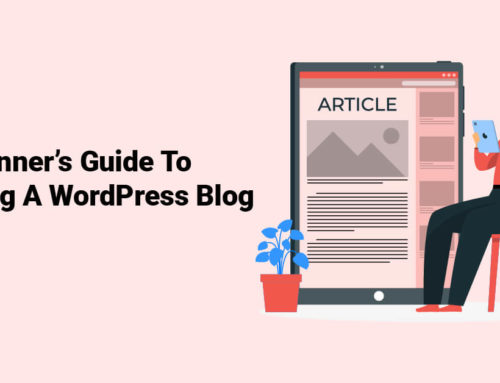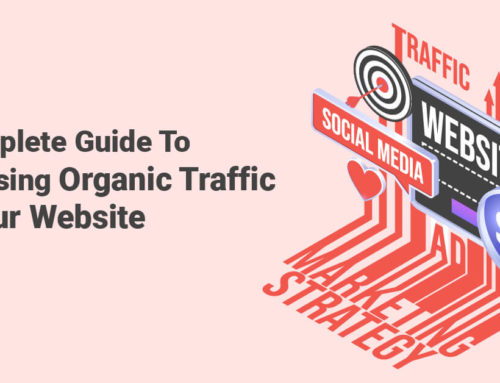
If you’re a creator trying to drive more traffic to your site or are simply trying to create a more user-friendly experience for your readership you’re probably looking for good ways to format your content. Headers are a great way to break up your content and create a readable flow, so knowing what size of header is appropriate to use on your website will increase the overall quality of your website.
Headers for websites come in a variety of classes with different sizes, namely H1-H6. An H2 sized header breaks up the text and creates logical signposts for the reader. These will be the most frequently used header size on a website, as they increase readability and search engines’ understanding of content.
Proper use of headers will make your site easier to navigate and read. Please read on for more information about the advantages and disadvantages of different sizes of headers and how to format them on your website to optimize clarity and visibility.
Why Should You Use Headers on Your Website?
Headers can be used for a variety of reasons. We’ll be demonstrating headers in this very article! The one used above is an H2, which is the most common size that is used to introduce major ideas. Not only do headers improve the overall appearance of your text, but there are also several practical reasons to use headers as well.
Traffic
Google keeps track of how much time people spend on websites. When Google detects that people are frequently ‘bouncing’ from your website, it will hurt your page’s ranking in search engine results, which means it will be harder for people to find your site. Headers make it easier for people to understand the point of your post and may persuade them to stay longer.
Accessibility
A lesser-known fact is that headers can improve the user experience of those who are visually impaired. Since headers use HTML, the text to voice AI that the blind rely on can recognize where the natural breaks in the text are. This creates a more pleasant experience for the person consuming the article, plus it’s nice for readers who are skimming the main ideas of your content.
Keywords
Including keywords that pertain to your topic of expertise is always a good idea as it makes it easier for readers to find your content. Headers contain keywords that make it more likely that your website will be discovered by your target audience. This is due to something called SEO which stands for search engine optimization which we’ll talk about more later on in the article.
Headers and SEO
Search engine optimization, or SEO, is a term coined by web content creators to describe the salience of a web page in search engine results. The better your SEO, the more likely your content will appear towards the top of the results of popular search engines. So when people search for terms and phrases that are related to your content, an SEO-optimized article is more likely to appear.
The discussion concerning headers and how much Google, in particular, uses them to promote relevant web pages has come to an end. Here is Google’s own Senior Webmaster Trends Analyst John Mueller explaining exactly how Google uses headers:
“We do use headings when it comes to search. But we use them to better understand the content on the pages.”
John Mueller, Senior Webmaster Trends Analyst
Watch the video below where he explains this and more about headers on Google:
The consensus is that regardless of how much Google uses headers to rank content, it is a known fact that pages that appear more professional and well put together are more likely to rise to the top of search results. Headers make posts seem more organized and are more likely to keep people on your site longer. Both of these factors will directly affect your SEO rankings.
The next thing that is important to keep in mind is that Google uses headers to determine their featured ‘snippet.’ The snippet highlights information on the web that it thinks most accurately answers the question the person is searching for. The Google algorithm uses headers to determine which information is most relevant to feature in its snippet, so it’s important to create accurate and informative headers for your article.
What Sizes of Headers Are There?
Generally speaking, headers come in sizes H1-H6. H1 is the biggest, H2 is the second biggest, and so on. Each header can be used for a distinct purpose and can contribute to the overall organization of the article. The bigger the header, the more likely it is to establish a main topic or idea. Smaller header sizes are used to delve even deeper into these main topics and ideas. Therefore, topics that are very nuanced or technical may have 3-4 sizes of headers. It’s rare but not unheard of for writers to use all six sizes of headers.
For example, let’s say that my topic is the proper care of a house cat. My H1 might be “Proper Care of a House Cat”. This is a title that introduces my major topic. Next, we need an H2. An important part of taking care of a cat is feeding it, so I’ll make my H2 “How to Feed Your Cat”. That’s a bit of a broad topic, so it might be in my best interest to break it up into further subheaders.
Some good H3 headers might be “How Often Should I Feed My Cat?”, “What Should I Feed My Cat”, and “How to Determine How Much Food My Cat Needs”. There may even be some opportunity for some H4 headers in here. If I wanted to, I could take the “What Should I Feed My Cat” header, and create a series of H4 subheaders for each different kind of cat food that I want to highlight. So, as you see, it all depends on what your point of emphasis is and how technical you want to get with your content matter.
What Are H1 Headers?
Typically you will only use one H1 header per post, and it is usually formatted as the title. An H1 will most often be used to communicate your main topic or idea, and not much else. You may want to address different main ideas throughout your writing, but it is a best practice to have one main overarching topic that will be formatted as your H1. Any other main idea introduced after this should be formatted as an H2.
The wording of the H1 is critical because it will be used by Google as the title of its featured snippet. Initially, a well-worded H1 with relevant keywords can be the most important thing for helping search engines. Ultimately it helps your audience understand what the point of your article is. Your H1 title should be concise and to the point, typically 60 characters or less.
Google’s algorithm for what content it decides to promote is constantly evolving and changing, but what has remained fairly constant is its emphasis on H1 tags. Writing a phenomenal H1 title is the first step you can take towards a good SEO and high rankings in SERP (search engine result pages).
What Are H2 Headers?
H2 headers are the most common and arguably most critical headers when it comes to SEO. H2 headers break up the text into more manageable segments. This increases overall readability and flow. They also create natural categories or sections so that people can easily scan articles for the information they need without having to read the entire post. Google uses H2 headers to scan documents for relevant information, so it’s important to create headers that stay true to your main topic and the points that you are trying to address.
H2 headers are designed to give more detailed information on the main topic. It is beneath these headers that you will put the bulk of your information. Make an effort to give the reader the most helpful, in-depth information possible beneath the H2 headers. Including information such as tables, lists, videos, quotes, anecdotes, and tables can help keep your reader engaged by keeping your post interesting and breaking up large chunks of text.
What Are H3 and H4 Headers and Should They Ever Be Used?
H3 and H4 headers will be used on a less regular basis than H2 headers, but it is still possible that they will be used especially when you are tackling a topic that is more technical or broad in its scope. They are used to create additional categories within topics that contain more specific topics within themselves that require further explanation.
H3 headers will almost always be used since they are necessary to supplement H2 headers with the necessary information. However, H4 headers will be seldom be used excepting cases where you are dealing with information that is technical in nature or involves lists. Let’s take as an example that you are writing about American History and have an H3 that reads “U.S. Presidents That Served More Than One Term”. You will probably want to list each U.S. President that fits into that category as their own H4 and give a brief explanation about each one.
In some formats, H2 and H3 headers look quite similar though, so some writers prefer to use the smaller H4 headers to create a better size contrast.
How to Adjust Header Size
The process of changing the header size in a CMS, or content management system, is fairly universal. The following is a walkthrough on how to change header size in WordPress, one of the most commonly used CMS:
- Open your draft in WordPress
- Choose a block to edit
- Compose your header
- Highlight your header
- Click on the paragraph symbol
- Transform to header
- Choose between H1-H6
Here is a video that portrays this same process but includes a tutorial on using HTML code:
How To Avoid Potential Pitfalls of Using Headers
When using a CMS to write, there are some rules we must follow that we might not think about while using other types of word processors to create content. Here are some general guidelines on avoiding some of the most common pitfalls specifically pertaining to using headers that you will want to keep in mind throughout this process:
Never Skip Header Sizes
It’s important to always use headers in order without skipping the sizes in between. This keeps your article looking polished and professional. Articles with irregular header size sequencing can appear erratic and inconsistent. Therefore, you should never use an H3 before you use an H2, and H4 before and H3, and so on.
Limit Yourself to One H1 Per document
The H1 header is used only once per article as the 60 character title that communicates your main topic or idea. To include more than one of this type of heading per post would be to commit a serious mistake because it would be confusing to the reader and it would undermine the goals you are trying to achieve. If you feel that you have more than one overarching topic or subject, it would be best to simply separate them into separate documents instead of trying to include them in one single page.
Don’t Use Headers for Non-Header Material
Some people may be inclined to format text as a header to make it bold or to make the font or text size match with text found elsewhere in the document. This is a bad idea because it will throw off the CSS structure and ultimately will do more harm than good if your goal is to boost your SEO and be seen on search engines. Only use headers for when you are marking off a new idea or concept, and stick to regular formatting tools when it comes to changing the visual appearance of text on the screen.
Don’t Use Formatted Text Instead of Headers
This is pretty much the inverse of the last one. Always use the prescribed header function instead of formatting text to look like a header on your own. Simply bolding, italicizing, underlining, or coloring text doesn’t format it as a header, and doing so thinking that it will is a recipe for disaster that will inevitably throw off your entire article.
Always Follow Up Headers With Text
Sometimes you may be tempted to let a header and its subsequent subheaders simply stand on their own as a replacement for the text. This is a bad practice and except for in very rare and extenuating circumstances, a header should always be followed up with a block of text. In a PowerPoint presentation, presentation points are often laid out in the form of cascading headings with main points of discussion. However, in an informative article, headings should always be followed by text. If you want to make a bulleted list of key points it must be done underneath an already established heading.






Leave A Comment
You must be logged in to post a comment.